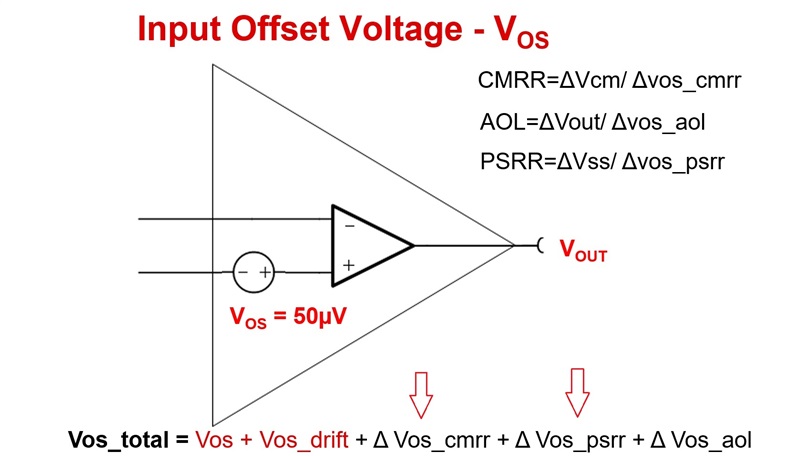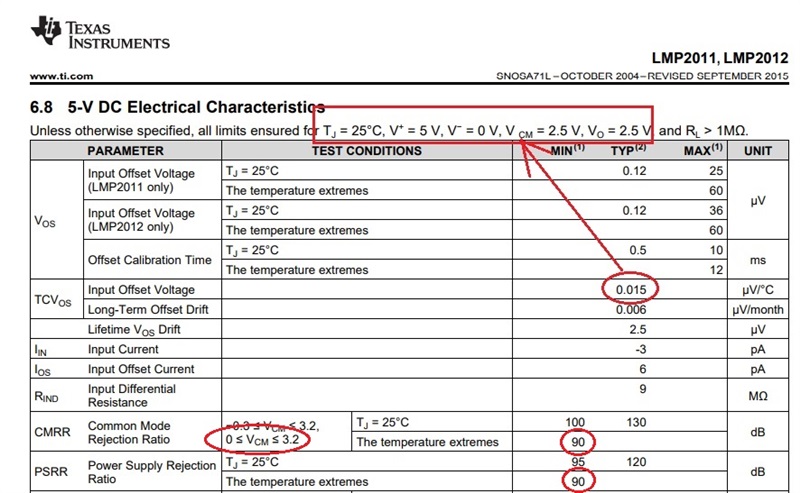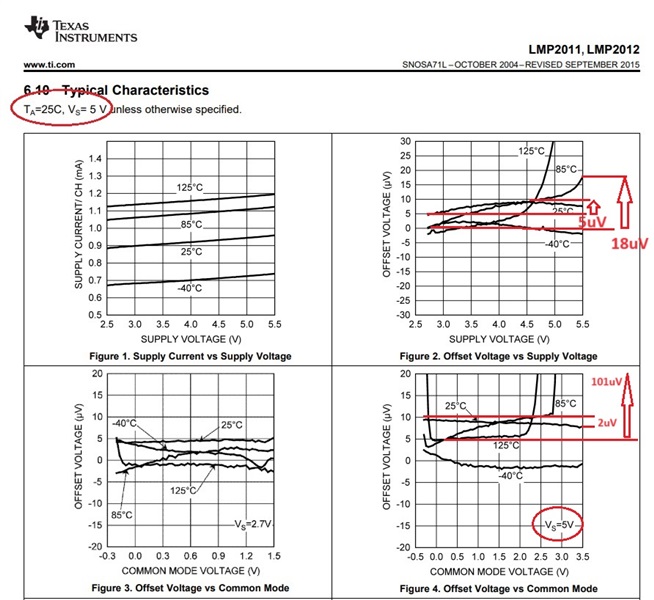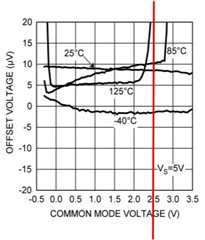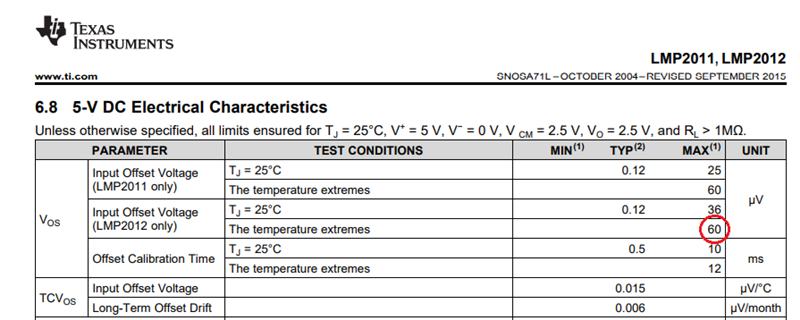Other Parts Discussed in Thread: LMP2021
The LMP2012 shows a TCVIO of 0.015 μV/°C. However, figures 2 through 4 seem to conflict. If I use a vertical line for the supply or common mode, it looks like the offset voltage can vary 10uV across temperatures from -40 to 85C. More if I go to 125C. This would indicate a TCVIO 5 to 10 times worse than predicted using the 0.015 μV/°C listed when operating across the full temperature range. What am I missing?


